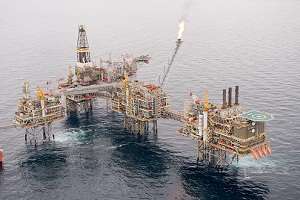Researchers size up aquifer to capture carbon

A Perth-based hydro-geologist has led a team of scientists modelling carbon sequestration in the Latrobe aquifer, below Bass Strait's ocean floor.
CSIRO expert Karsten Michael says the Latrobe Aquifer was examined because of its proximity to coal-fired power plants.
"Victoria is using brown coal for electricity generation so generating a large volume of carbon dioxide emissions," he says.
Dr Michael says if the study becomes a project, it will be the first such undertaking large enough to mitigate industrial atmospheric emissions, anywhere in the world.
He says the CSIRO and the Cooperative Research Centre for Greenhouse Gas Technologies in Canberra have been assessing the possibility of CO2 storage for more than 10 years.
"My part of it is I'm actually doing basin-scale assessment," he says.
"I'm not looking at the specific cases or injection site, I'm really looking at the impact and modelling the impact, building numerical models and simulating injection and flow of subsurface fluids."
Dr Michael says the modelling also shows CO2 injection near the offshore oil field would partly mitigate declining groundwater levels in Gippsland's irrigated horticulture districts.
The Latrobe aquifer is a porous rock formation that contains fresh water, salt water and petroleum.
It is recharged with fresh water at an inland location, along the Baragwanath Anticline, where it has an outcrop.
A wedge-shaped zone of fresh water extends some 20km out to sea, contained by a sloping ceiling of impervious sedimentary rocks up to the ocean floor.
As the aquifer ceiling becomes progressively lower, the water is increasingly saline, eventually reaching a seawater-like salt concentration.
Petroleum accumulations are found at the top of the aquifer that contains this salty water.
Half a century of oil extraction has caused an overall pressure depletion, partly contributing to an up to 40m lowering of the water table at the aquifer's inland part.
Dr Michael says drier seasons, water bores for irrigation and coal mining also contribute to lowered groundwater levels which could be mitigated if large amounts of CO2 were injected into the lower, saline, level.
He says the chances of it escaping back into the atmosphere are very low.
Some would be dissolved in the water, and some trapped in structures in the ceiling, prevented from escaping by the same impervious rock layer that traps the petroleum deposits.
"Petroleum has accumulated in this aquifer below this Lake Entrance aquitard, a proven barrier," he says.
Dr Michael says similar investigations are underway for the South Perth Basin.
Provided by Science Network WA


















